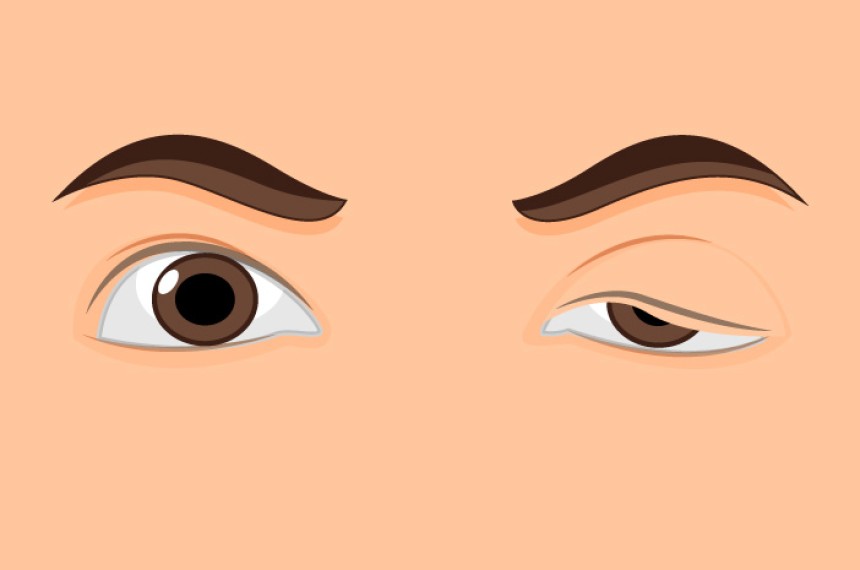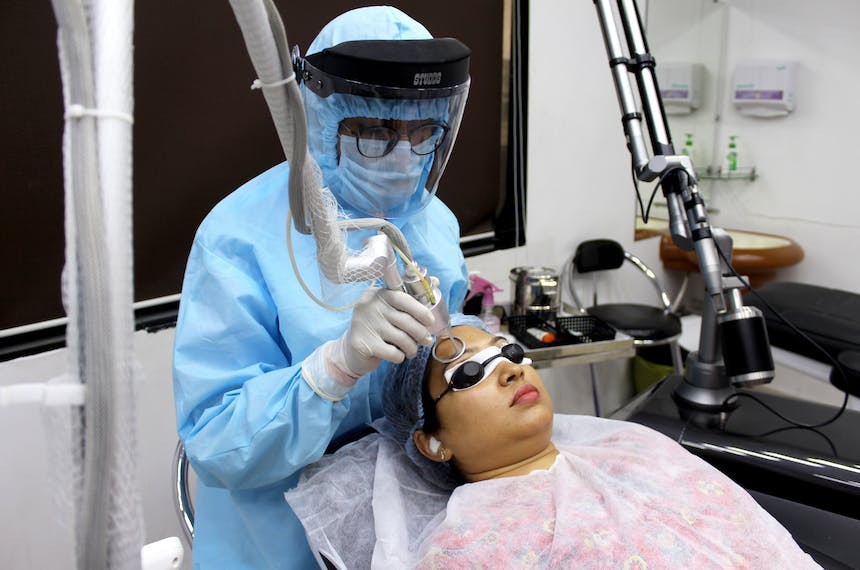
Myasthenia Ocular Type
Ocular Myasthenia Gravis (OMG) causes eye muscle weakness, resulting in ptosis and diplopia. Treatment options include acetylcholinesterase inhibitors, immunosuppressive therapy, thymectomy, and corrective surgeries for ptosis and strabismus. Immunomodulating treatments can be considered for refractory cases.
Ocular Myasthenia Gravis (OMG): Introduction and Clinical Features
Occular myasthenia gravis (OMG) is an autoimmune disorder characterised by weakness and fatigability of ocular skeletal muscles including levator palpebrae superioris, orbicularis oculi and the oculomotor muscles. Patients usually present with ptosis, diplopia, or oculomotor paresis. (1, 2)
Treatment Approaches for OMG
Treatment of OMG includes symptomatic treatment, acetylcholinesterase inhibitors, immunosuppressive therapy, immunomodulatory treatment, thymectomy, and corrective treatments of ptosis and strabismus. (3)
Symptomatic Management of Ptosis and Diplopia
Symptomatic management of ptosis is with crutches and lid adhesive devices which could help in the treatment of ptosis pending a response to acetylcholinesterase inhibitors or immunosuppressive therapy. Use of lubricating drops and periods of abstinence from device use are crutial to prevent corneal dryness and exposure keratopathy. For diplopia, an eye patch, opaque contact lens or occlusion of an eyeglass lens with opaque tape are simple ways to eliminate it. Prism lenses offer another non-pharmacological alternative for patients with diplopia. (4)
Acetylcholinesterase Inhibitors for OMG
Acetylcholinesterase inhibitors include pyridostigmine (starting at 30 mg three times daily), neostigmine (starting at 15 mg three times daily). (5, 6)
Chronic Immunosuppressive Therapy for OMG
Chronic immunosuppressive therapy includes glucocorticoids (starting at 20 mg daily and then increase by 5 mg every three to five days to a usual target dose of 60 mg per day. This often takes four to eight weeks. Once an effective response is obtained, it is important not to taper the steroids too quickly. Many patients who respond to steroid can be effectively tapered down to 10 mg daily as a maintenance dose), or steroid sparing agents (azathioprine [starting at 50 mg daily], mycophenolate [starting at 500 mg twice daily]). (7, 8)
Immunomodulating Treatments for Refractory OMG
Approximately 10% of patients with severe MG are refractory to chronic immunosuppressive therapy. immunomodulating treatments including plasma exchange (a typical course of treatment consists of five exchanges [3 to 5 L of plasma each] over 7 to 14 days), intravenous immune globulin (IVIG) (the total dose is 2 g/kg, usually over five days), eculizumab (900 mg infused weekly for four weeks, followed by 1200 mg a week later, and then 1200 mg every two weeks), or rituximab (375 mg/m2 weekly for four doses) can be considered. (9)
Thymectomy in the Treatment of OMG
Thymectomy has therapeutic role in selected patients with MG. Those patients include those with thymoma. (10)
Surgical Correction for Ptosis and Diplopia in OMG
Surgical correction in the form of extraocular muscle resection and recession, can be performed on patients with stable ophthalmoparesis. (11)
References
1-Sommer N, Melms A, Weller M, Dichgans J. Ocular myasthenia gravis. A critical review of clinical and pathophysiological aspects. Doc Ophthalmol. 1993;84:309–33.
2-Barton JJ, Fouladvand M. Ocular aspects of myasthenia gravis. Semin Neurol. 2000;20:7–20.
3-Antonio-Santos AA, Eggenberger ER. Medical treatment options for ocular myasthenia gravis. Curr Opin Ophthalmol. 2008;19:468–78.
4-Kupersmith MJ, Ying G. Ocular motor dysfunction and ptosis in ocular myasthenia gravis: effects of treatment. Br J Ophthalmol 2005; 89:1330.
5- Walker MB. The James Lind Library: treatment of myasthenia with Physostigmine. Video of original Mary Walker patient treated with physostigmine. 1934 Available at: http:// www.jameslindlibrary.org/walker-mb-1934/.
6- . Gilhus NE. Myasthenia gravis. N Engl J Med 2016;375(26):2570–81.
7- Pascuzzi RM, Coslett HB, Johns TR. Long-term corticosteroid treatment of myasthenia gravis: report of 116 patients. Ann Neurol 1984;15(3):291– 8.
8- Mantegazza R, Antozzi C, Peluchetti D, et al. Azathioprine as a single drug or in combination with steroids in the treatment of myasthenia gravis. J Neurol 1988; 235(8):449–53.
9- Barohn RD, Dimachkie MM. Immunomodulatory therapies in myasthenia gravis In: Mazia C, editor. Miastenia gravis y trastornos relacionados. Buenos Aires (Argentina): Editorial InterMedica; 2017 p. 273–88.
10- Cea G, Benatar M, Verdugo RJ, et al. Thymectomy for non-thymomatous myasthenia gravis. Cochrane Database Syst Rev 2013;(10):CD008111.
11-Chavis PS, Stickler DE, Walker A. Immunosuppressive or surgical treatment for ocular Myasthenia Gravis. Arch Neurol 2007; 64:1792.





